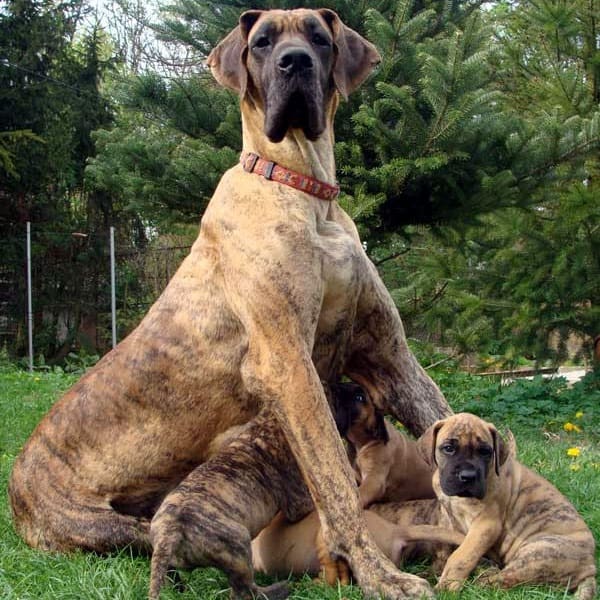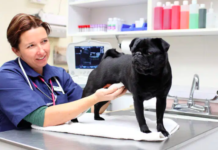If you want a dog that is loveable, patient and has the perfect temperament to be a family dog, you should consider bringing home a Great Dane. We know that a Great Dane is big, really big. But when you realize how compassionate they are, you immediately fall in love with these gentle giants. With an average life expectancy of 8 to 10 years, Great Danes can turn out to be the perfect family dog, provided your house has sufficient room for a Great Dane, given how big this breed grows on to become.
Leaving all the adorableness aside, like every other breed of dog, Great Danes aren’t immune to health conditions either. And if you want to be a good pet parent, you should know about these conditions. And knowing about them will help you deal with them better. You can spot symptoms with ease and finding doctors to treat your dog becomes easy too. This is why, in order to help you out, in this article, we are going to talk about the 5 most common Great Dane health problems you should know about.
Cardiomyopathy
Cardiomyopathy is a heart condition that is unfortunately fairly common in large breeds like the Great Dane. In this condition, the dog’s heart enlarges and can cause some difficulty for the dog in question. Due to the enlargening of the heart, it weakens and can at times lead to congestive heart failure. Unfortunately, this condition often goes unnoticed in most dogs until it gets fatal. However, there are a few symptoms you can be vigilant about. Some of these symptoms include lethargy, weight loss, weakness, coughing, and so on. Treatments include several medications.
Gastric torsion
Gastric torsion is just another fancy word for a condition we commonly know as bloat. We understand that it does not sound as serious because well, it is bloating. But it can indeed be dangerous for dogs, especially Great Danes. This usually happens when the dog overeats or eats too fast. As food passes through a dog’s stomach, gas builds up and the stomach expands. If the stomach expands beyond its limits, it can hamper blood circulation to the heart and the stomach. The stomach can then begin to twist and cause damage to the rest of the organs. If caught on time, the condition can be treated. Some of the common symptoms of gastric torsion include an enlarged stomach, pacing, lack of normal digestive sounds, and so on. You need to take your dog to a doctor as soon as you suspect bloating.
Hip dysplasia
This is another common health problem with dogs in general. This is a skeletal condition is with the bones that are a part of the ball and socket joint don’t develop in unison. This results in uneven growth and impacts the most basic things like walking and moving around. This condition can cause excruciating pain because every time your dog walks, the leg bone pops in and out. Some of the most common symptoms include pain or discomfort during exercise, lameness, difficulty moving around freely, and so on.
Wobbler syndrome
Wobbler syndrome, also known as cervical spondylomyelopathy is a condition that is fairly common in large dogs. In this condition, the neck and the spinal bones don’t grow normally. And since the condition also affects the nerve endings, it impacts all four legs and can lead to your dog walking with a wobbly gait, hence the name. Some of the most common symptoms of Wobbler syndrome include wobbly gait, stiff neck, muscle loss near the shoulder, difficulty getting up, and so on. When it comes to the treatment, some vets may recommend surgery while others may not. Bed rest is also a popular recommendation to battle Wobbler Syndrome.
Cancer
Cancer is one of the most common illnesses in dogs, and Great Danes are no exception. There are several types of cancers that can be determined after proper treatment. Some of the most common symptoms of cancer include lumps, lameness, swelling, joint pain, anorexia, and so on. The course of treatment largely depends on the progression of the illness and the age of your dog.
These are some of the health conditions that are fairly common in Great Danes.
































